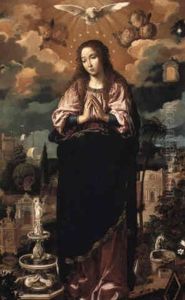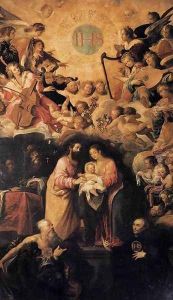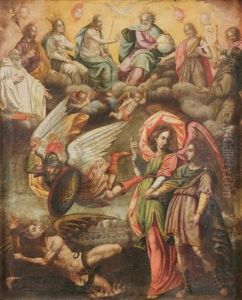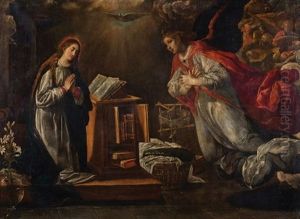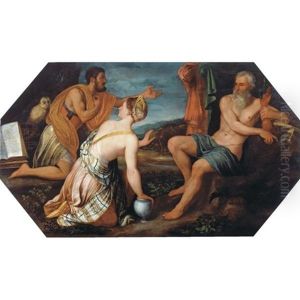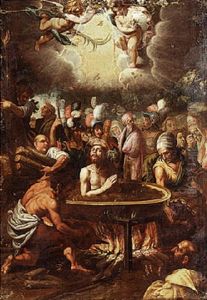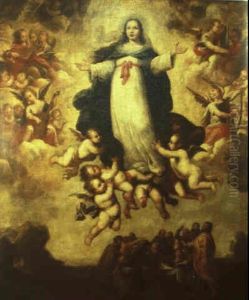Juan de las Roelas Paintings
Juan de las Roelas, also known as Juan de las Roelas or Roelas, was a significant painter of the Spanish Golden Age, whose life and work played a crucial role in the transition between the late Mannerist and early Baroque periods in Spanish art. Born in Seville or Olmedo, the details of his early life, including the exact year of his birth, remain somewhat unclear, with estimates ranging between 1558 and 1560. He is believed to have received his initial training in art in Italy, where he was exposed to the works of the great Renaissance masters, and this influence is evident in his mature style.
Roelas's work is characterized by its dramatic intensity, vibrant use of color, and dynamic compositions, elements that anticipated the Baroque style that would come to dominate Spanish art later in the 17th century. After returning to Spain, he settled in Seville, a city that was experiencing a cultural and artistic boom. Here, he became a contemporary of other notable artists, such as Francisco Pacheco, Diego Velázquez's teacher, though Roelas's work is distinct for its emotional depth and innovative use of light and shadow.
One of his most famous works, 'The Vision of Saint Hyacinth', showcases his skill in depicting mystical religious experiences with a realism and emotional intensity that was groundbreaking at the time. His paintings for various Seville churches and convents, including the Hospital de la Caridad and the Monastery of San Isidoro del Campo, helped to establish his reputation as a master of religious subjects, imbuing his figures with a sense of divine presence and humanity.
Despite his contributions to the Spanish art scene, Roelas never achieved the same level of fame as some of his contemporaries during his lifetime. It was not until the 19th and 20th centuries that his work was reevaluated and he was recognized as a pivotal figure in the transition towards Baroque art in Spain. Juan de las Roelas died in Olivares, near Seville, in 1625, leaving behind a body of work that continues to be admired for its emotional power and technical brilliance.
